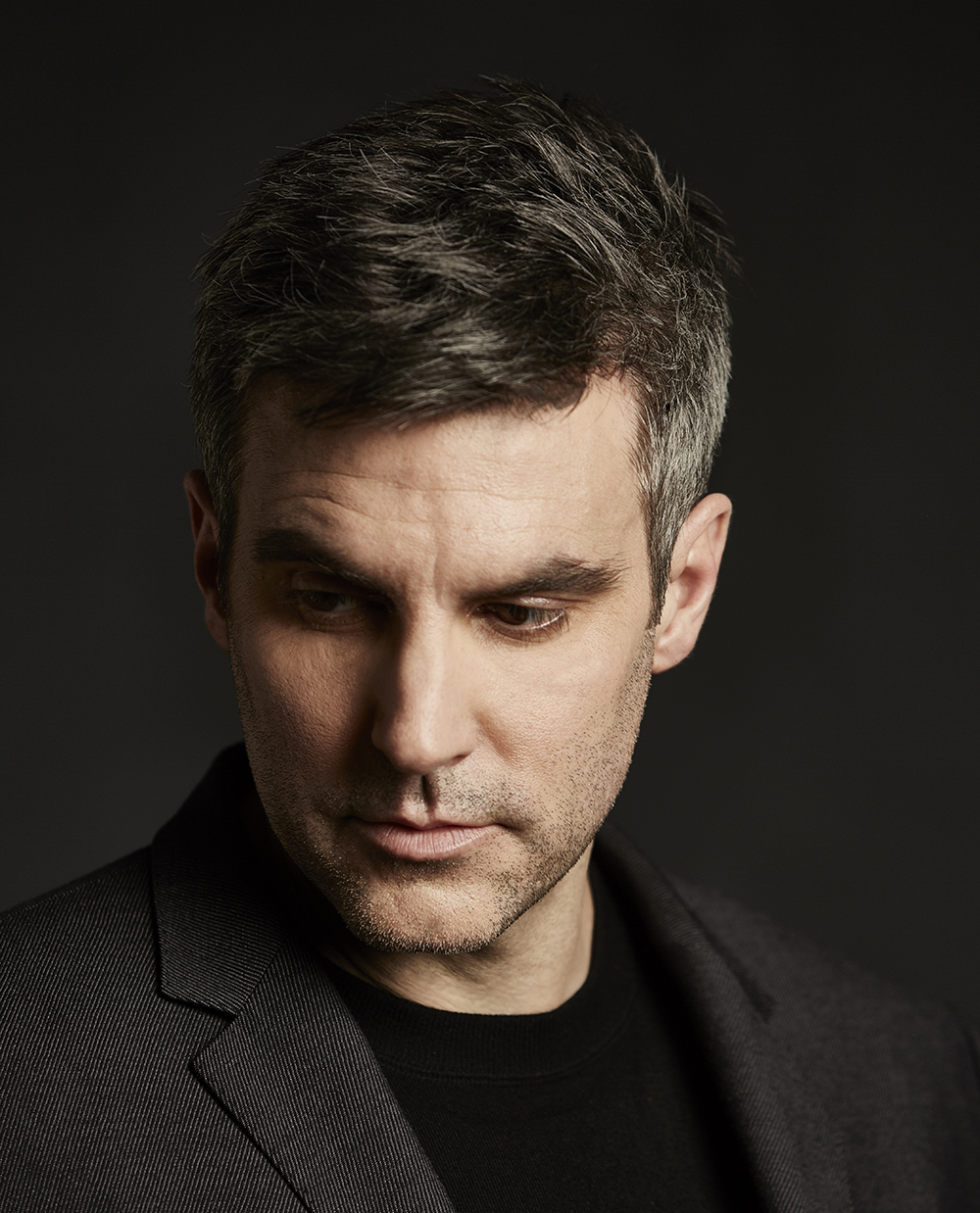
© David White
With great sincerity and affection” reads the expression marking at the opening of Kevin Puts’s 2013 Flute Concerto. It’s a phrase that sums up beautifully the 51-year-old composer’s aesthetic of authenticity: earnest-yet-elegant melodies, contrapuntal clarity, traditionally triadic harmonies, and a penchant for light, sparkling orchestration. “My colleagues are all really nice to me,” he says. “But I’m sure they listen to stuff and think, ‘Wow, that’s really heart-on-your-sleeve.’”
The question guiding Puts’s creative process these days is, “Am I writing music which, if I hadn’t been the one who wrote it, I would want to listen to more than once?”
It is something he keeps in mind when revisiting recordings of previous works on Apple Music. His 1997 Marimba Concerto, composed while still a twentysomething doctoral student at Eastman, measures up to this standard, he says. You can hear traces of the minimalists who had a profound influence on his early style—Reich, Adams, and Torke. But the piece is most obviously indebted to his idol Mozart, especially the bittersweet chord progression that serves as the basis of the first movement.
“When it comes to Mozart, what I admire so much is that there’s a sense of logic through it,” he says. “That’s the kind of composer I would love to be—where it doesn’t feel, as a listener, that the composer has struggled at any moment. It just had to go that way, and the music just exists.”
That sense of inevitability defined Puts’s symphonic writing of the 2000s, when he contributed four major entries to the genre. During this period, he began to conceive large orchestral works along narrative lines, treating musical themes as protagonists and guiding audiences through metaphorical journeys.
“How do you traverse the emotional terrain of a piece? What do you go through? It’s going to feel what it feels like to watch a movie.”
Unsurprisingly, Puts’s cinematic approach to musicalstorytelling lent itself to the stage. His first foray into opera, Silent Night, was awarded the 2012 Pulitzer Prize for Music and became an instant contemporary classic. But its success overshadowed some of his subsequent operatic efforts, including the delightfully macabre Elizabeth Cree from 2017—a penny dreadful featuring numbers in the style of Victorian music hall.
Puts doesn’t think he settled into a truly idiomatic vocal style until his most recent operatic commission, a starstudded adaptation of Michael Cunningham’s novel The Hours that premiered at the Met last year. The experience of collaborating closely on this project with veterans like Renée Fleming has led him to revise Silent Night.
“I had no idea what I was doing with writing for voice. Not just the vowels, but the consonants, the end of one word moving to the beginning of the next word. There’s so much music in the English language.”
Poetry has long been a creative wellspring for Puts, whose aunt, Fleda Brown, is a respected poet. As a follow-up to The Hours, he’s planning a cycle of Dickinson songs for mezzo-soprano Joyce DiDonato. “It just blazes off the page,” he says, holding up a thick copy of her collected verse. “The struggle of being a creative person at a time when that wasn’t what women were expected to do—it’s a powerful thing for me. I respond well to women writers.”
In spite of these recent vocal projects, Puts admits that he isn’t necessarily ready to start another opera. “Instrumental music has always been really what I do. The moments when I’m writing opera and I’m able to orchestrate are really the most interesting for me.” His Bartókian concerto Contact for the string trio Time For Three was awarded a Grammy this year, and currently he’s preparing a violin concerto for Joshua Bell.
His most recent premiere, a Concerto for Orchestra composed for the St. Louis Symphony, was partially inspired by Amanda Gorman’s poem “Hymn for the Hurting,” an elegy for the victims of the 2022 school shooting in Uvalde, Texas. “It was galvanizing for me,” says Puts. “Somehow she has a way of saying the things we need to hear in a way that feels so effortless, comforting, and unpretentious.”
Many of Puts’s compositions began as reactions to tragedies—e.g., 9/11 in his Second Symphony and the 2011 Tsunami in How Wild the Sea. Yet this isn’t to say these works are “about” these disasters. On the contrary, the composer wishes audiences would appreciate a piece for its craft rather than dwell on any extra-musical connection.
“But for some reason, I feel insecure just saying, ‘Here’s a sonata.’ Maybe there is something that I need to investigate—that I’m afraid that I won’t engage the audience unless there’s something ‘real’ that the music is responding to.”
Ultimately, Puts’s art is driven by a spirit of utopianism. Though snobbier critics dismiss his sincerity as sentimentality, audiences welcome the genuine sense of hope that pervades his compositions.
“I guess I’m a softie. I’m optimistic. I like music that’s uplifting. I don’t want to dwell on the parts that are so challenging about living in the world when I’m writing music. I know what the world is. I’m not naïve. I don’t ignore it. But the way I like music to function is so that it speaks to the better part of who we are, who we can be. That’s where I like to live as a musician.” •
Joe Cadagin is a musicologist and a critic of contemporary opera. His features and reviews have appeared in Opera News, San Francisco Classical Voice, and Fanfare. You can read more of his writing at clippings.me/joecadagin.